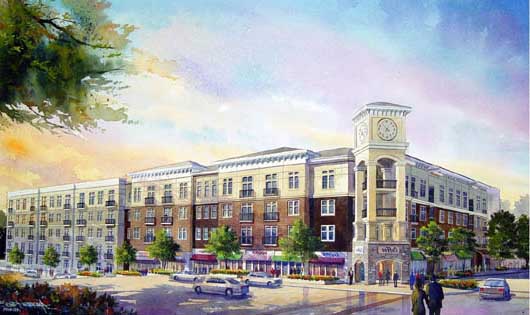 ONE BIOSPHERE
ONE BIOSPHERE 
| |
|
|||


ENVIRONMENTAL FORUM
OUR STORY
One
Biosphere is an alliance of people and organizations who are united to
preserve the quality of our global environment through our forum and
publications, education, advocacy, research and communications among
our members and partners.
Evolution of Urban Planning Systems
Environmental protection and conservation are critically important to planning systems throughout the world. The specific effects of development need be mitigated and attempts are made to minimize the overall effect of development on the local and global environment. This is commonly achieved through the assessment of sustainable urban infrastructure.
In advanced urban or village planning models, local context is critical. In many urban settings, gardening and other outdoor activities assumed a central role in the daily life of citizens. Environmental planners are focusing on smaller systems of resource extraction, energy production and waste disposal. There is a practice known as Arcology, which unifies the fields of ecology and architecture, using principles of landscape architecture to achieve a harmonious environment for all living things. On a small scale, the eco-village theory has become popular, as it emphasizes a traditional 100-140 person scale for communities.
An urban or city planner uses a variety of quantitative tools to forecast impacts of development on the environment, including roadway air dispersion models to predict air quality impacts of urban highways and roadway noise models to predict noise pollution effects of urban highways.
As early as the 1960s, noise pollution was addressed in the design of urban highways as well as noise barriers. The Phase I Environmental Site Assessment is an important tool for the urban planner to identify early in the planning process any geographic areas or parcels that contain toxic constraints.
Transportation Planning
Transportation within urbanized areas presents unique problems. The density of an urban environment can create significant levels of road traffic, which can impact businesses and increase pollution. Parking space is another constaint, requiring the construction of large parking garages in high density areas which could be better used for other development.
Environmentally sound planning takes advantage of transit oriented development, which attempts to place higher densities of jobs or residents near high-volume transportation nodes. For example, some cities permit commerce and multi-story apartment buildings only within one block of train stations and multilane boulevards, and accept single-family dwellings and parks farther away.
Development of the freeway facilitated suburban development and the separation of work and residence became a characteristic of city growth. Classic planning in the past 100 years, with its traditional notion of separation of uses, also contributed to city development. This made sense in past eras dominated by heavy industry. Similarly, development of the suburban mall contributed to creating cities lacking night life, organized around the workplace. Unfortunately, the cities developed in that era were lifeless, drab places, mainly because of this mandated separation of uses.
Mixed Use Development

Closer study of the growth and life of cities recognized that people thrive on spontaneous and unstructured interaction. At the same time, the economic shifts of the last 40 years seemed to eliminate the need to separate work, shopping and home life. Complex, multi-faceted urban spaces bring people together in different ways, creating interesting interaction and synergy. Cities thrive on the need for people to come together in a variety of ways which cannot be strictly planned. Only recently have planners seen the value to be gained in enhancing this spontaneity and mix of urban uses.
The rising cost of housing, traffic congestion, high fuel costs and the need to ensure the long-term economic viability of city centers and downtowns also helped to contribute to increased multi-use development. There are numerous examples of programs managing growth, such as the San Francisco Bay Area's Focus Program that have provided an opportunity for local governments and the regional agencies, i.e. Association of Bay Area Governments (ABAG), Bay Area Air Quality Management District (BAAQMD), San Francisco Bay Conservation and Development Commission (BCDC), and the Metropolitan Transportation Commission (MTC), to work together to create complete, livable communities.
Mixed-use development has offered a partial solution. The Bay Area Focus program was designed to encourage land use policies and practices that maximize walking, bicycling, transit ridership, and other forms of high-occupancy-vehicle travel, while diminishing the need to travel long distances and reducing vehicle-related air pollution. One of the important goals has been to encourage a mix of land uses with jobs, housing, retail, schools, parks, recreation, and services in proximity.
The Focus program encouraged infill and the efficient use of land capacity within existing communities It encouraged compact, complete, resource-efficient communities near existing or planned transit and other infrastructure and provided opportunities for people to live near their jobs and work near their homes. The number and length of auto trips has been reduced and walking and biking activities have been encouraged. By encouraging the development of compact, healthy projects with a diversity of housing, jobs, activities, and services to meet the daily needs of residents, viable, sustainable communities have been created. Problems such as traffic congestion and parking shortages and incompatible uses have been addressed in the planning stages.
Washington State's Growth Management Act combined to increase densities in urban centers. An effort on the part of city planners, seeking to create "urban villages" has helped to bring about much of the recent mixed-use development in Seattle, a good deal of which occurs in Neighborhood Commercial zones.
In Seattle, while a mixed-use character existed in many neighborhoods, it was a viable mode of development and as a planning tool, helped foster interesting growth, while providing an opportunity to preserve a neighborhood's unique characteristics. When managed sensitively, planners and developers realized that mixed-use development made sense.
Increased density does not always occur easily or painlessly. Due to Seattle's legacy of single-family neighborhoods and neighborhood-friendly systems, the density changes in the city generated an endless series of challenges and appeals. However, at some point, the choice became clear to either continue endless sprawl in the suburbs or allow increased density within the city.

CONTACT US:

![]() Our Email: one@onebiosphere.com
Our Email: one@onebiosphere.com